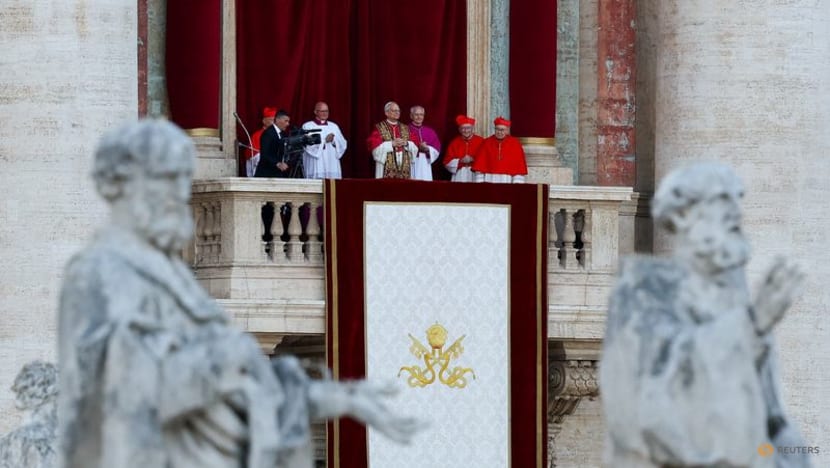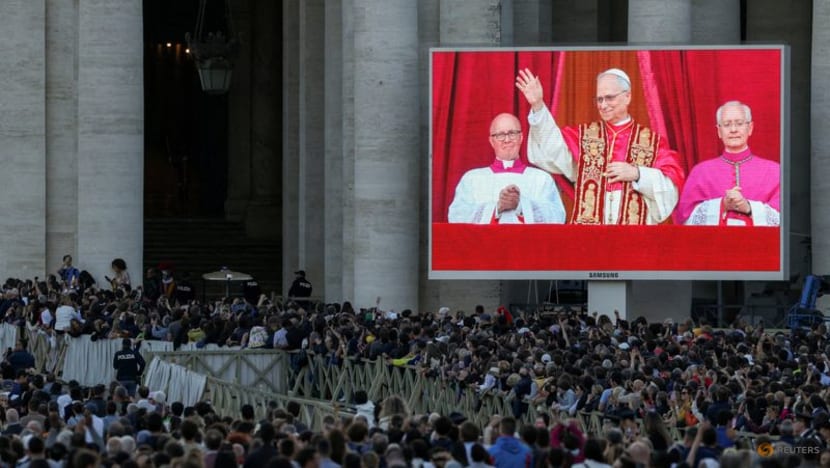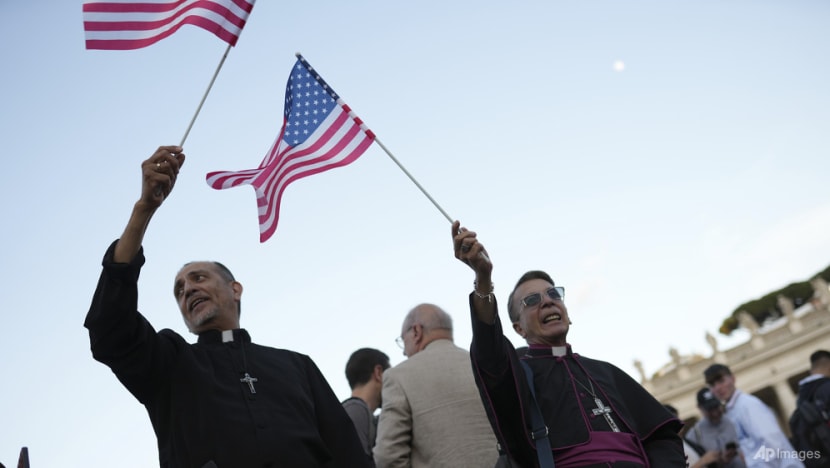What's in a name? Why the new pope chose to be Leo XIV
The previous Leo - Leo XIII, who was pope between 1879 and 1903 - was a determined defender of the rights of workers.Â

Newly elected Pope Leo XIV, Cardinal Robert Prevost of the United States appears on the balcony of St Peter's Basilica, at the Vatican, May 8, 2025. (Photo: REUTERS/Murad Sezer)
VATICAN CITY:Â American Robert Francis Prevost's decision to choose Leo XIV as his papal name hints at the "social" brand he intends to give his pontificate, according to experts.
Once elected, a pope has only a short time to pick an official name before being ushered onto the balcony of St Peter's Basilica and presented to the world.
The choice usually reflects admiration for a previous pontiff.
It can signal continuity or a break with the past, and suggest whether the new leader of the Catholic church is progressive or traditionalist.
"The choice of name can be the first signal a new pope gives about the kind of pontificate he intends to have," Vatican expert John Allen said in a book on the conclave.

The previous Leo - Leo XIII, who was pope between 1879 and 1903 - was a determined defender of the rights of workers.Â
He laid the foundation for modern Catholic social thought, most famously with his 1891 encyclical Rerum Novarum (which can be translated as "of new things"), which addressed workers’ rights and capitalism at the dawn of the industrial age. He criticised both laissez-faire capitalism and state-centric socialism, giving shape to a distinctly Catholic vein of economic teaching.
The name "is a deep sign of commitment to social issues", said Natalia Imperatori-Lee, the chair of religious studies at Manhattan University. "I think this (new) pope is saying something about social justice, by choosing this name, that it is going to be a priority. He is continuing a lot of Francis’ ministry."

The choice of Leo XIV suggests that the theme of social justice will be taken up again, "both in relation to the excesses of globalisation, but also in relation to broader societal issues such as artificial intelligence", said Vatican expert and author Francois Mabille.
It could also be interpreted as a tribute to his predecessor, who was the first pope to pick Francis - and in doing so defied the bookmakers, who had been betting the new pope would choose the name Leo.
WHY POPES CHOOSE NEW NAMES
For most of the Catholic Church’s first millennium, popes used their given names. The first exception was the 6th-century Roman Mercurius, who had been named for a pagan god and chose the more appropriate name of John II.
The practice of adopting a new name became ingrained during the 11th century, a period of German popes who chose names of early church bishops out of “a desire to signify continuity”, according to Rev Roberto Regoli, a historian at Rome’s Pontifical Gregorian University.
For many centuries, new popes tended to choose the name of the pope who had elevated them to cardinal. John was the most popular, chosen by 23 popes, followed by Benedict and Gregory, each with 16.
It was from the mid-20th century that new popes began to choose names signalling the aim of their papacy, Regoli said.
Pope Leo XIV spent decades among the poor in Peru.
On Thursday, Peruvian bishop Edinson Farfan called the new pope "a brother who has passed through these lands".
"From the beginning when he finished his studies he came to Peru, to the mission in the north of Peru in Chulucanas, with a clear option for the poor. And from the moment he arrived in Peru he fell in love with Peru," Farfan told a press conference.
"He has given his whole life to the mission in Peru," he said, adding that Leo XIV was "sensitive to the issue of poverty".











